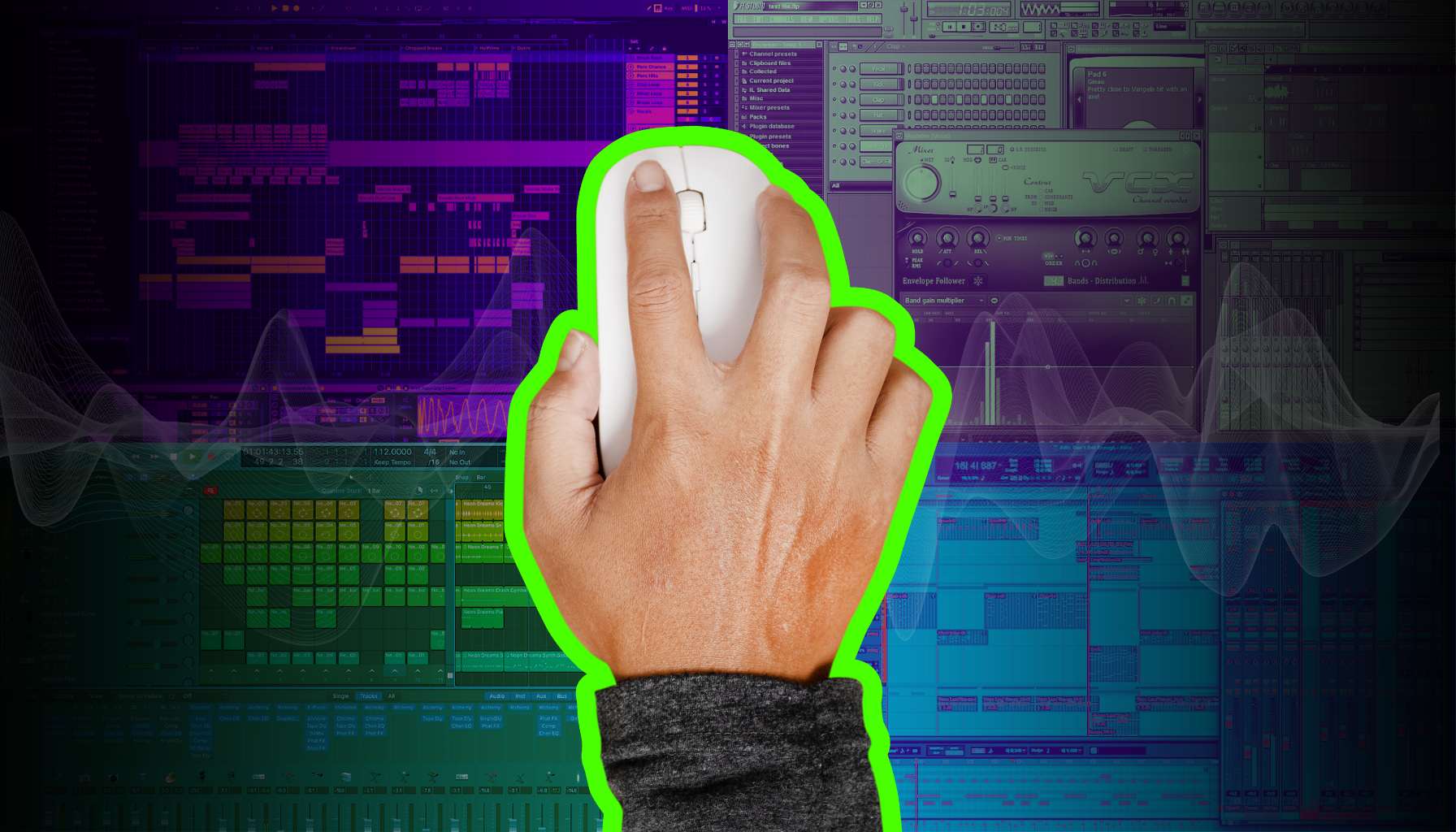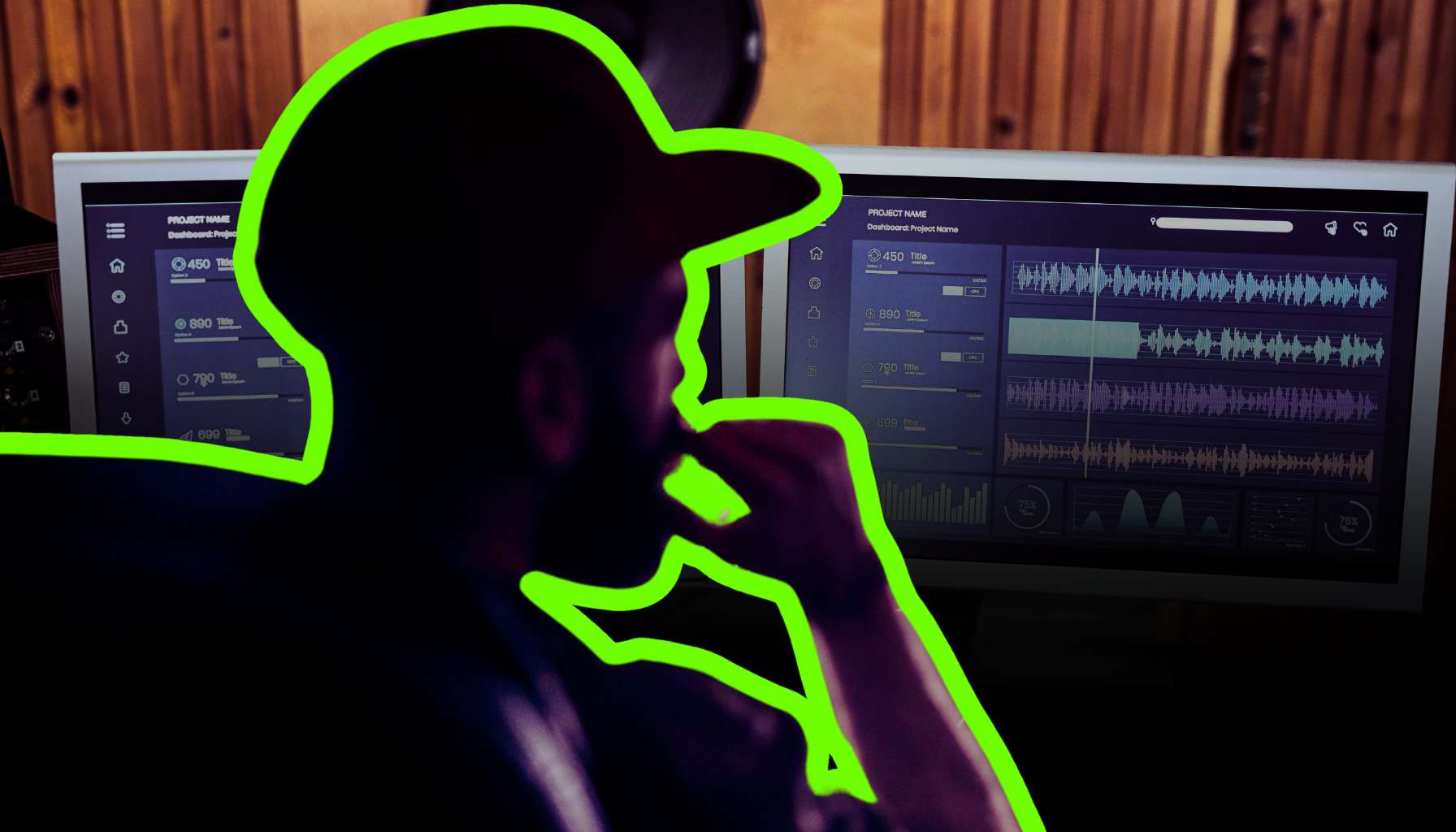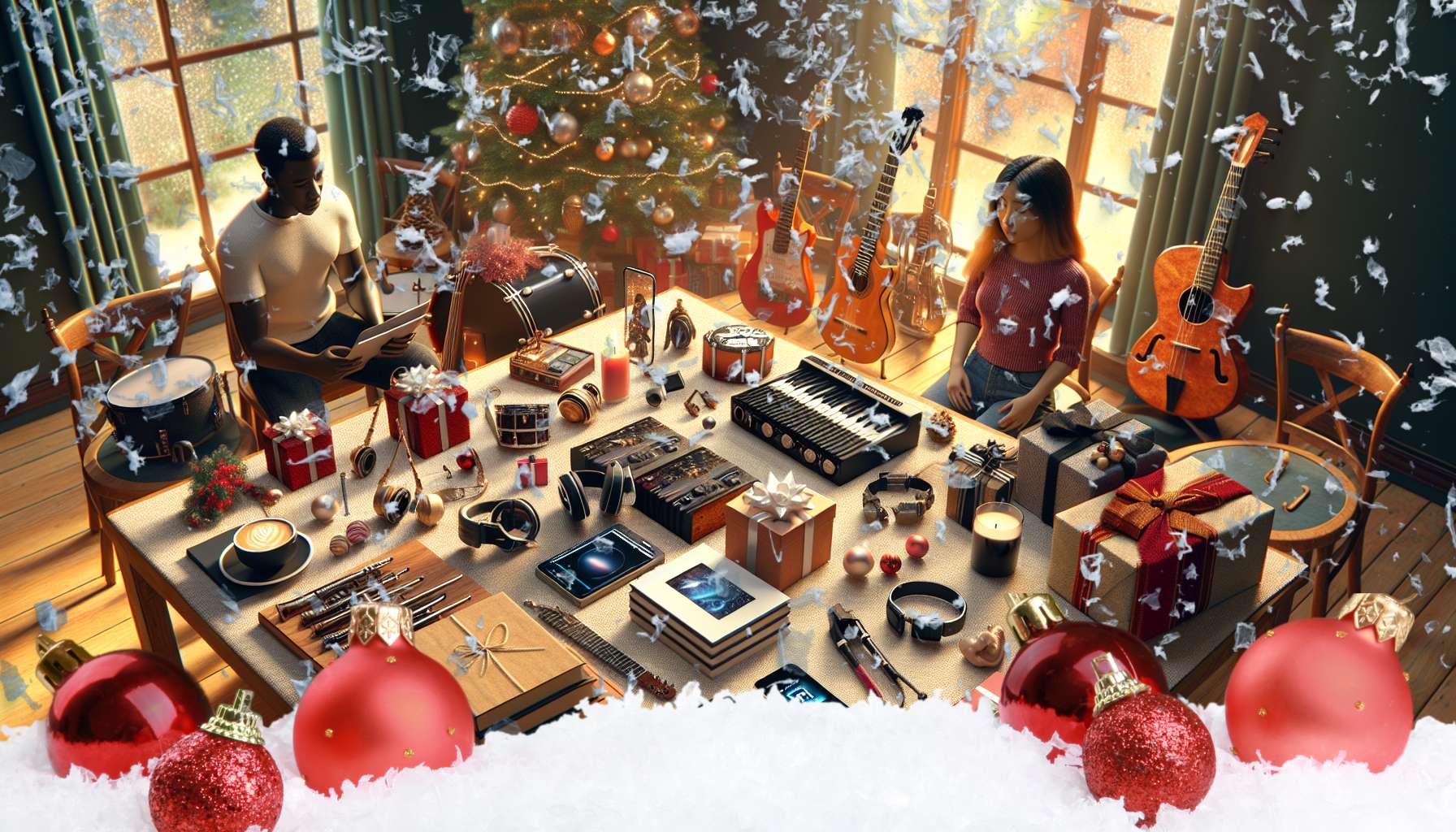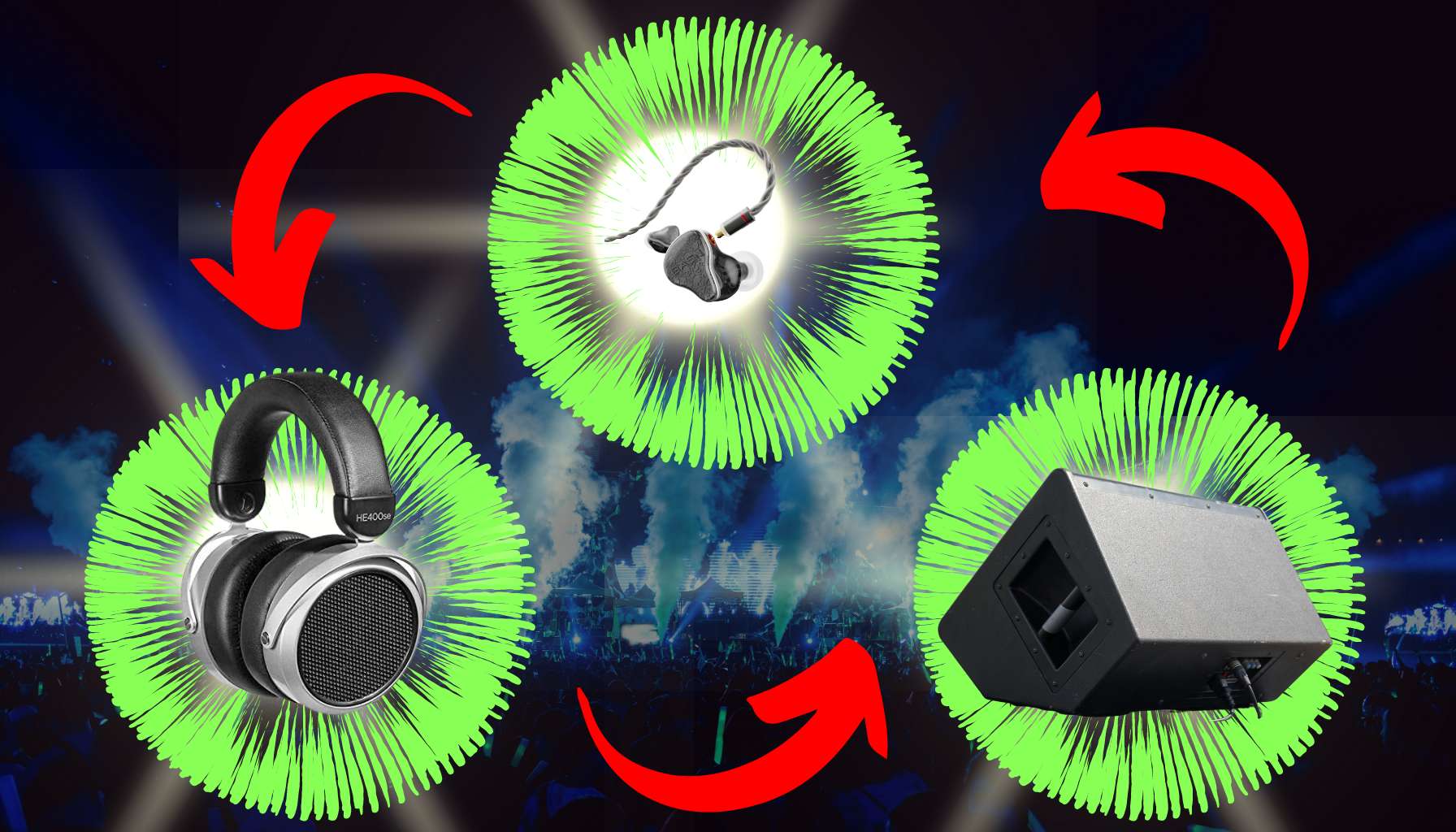The Fundamentals of Sound Monitoring
Imagine painting a masterpiece with a blindfold on. Preposterous, right? That’s what mixing without proper monitoring is like. With your ears as your guide, every tweak and twist in the mix hinges on the transparency and accuracy of what you hear. Hence, monitoring isn’t just a fancy step in music production—it’s your auditory eyeglasses.
The Role of Monitoring in Music Production
Objectives of Accurate Sound Monitoring
Accurate monitoring is the compass for your audio journey. It’s all about honest feedback. If your monitors and headphones are the metaphorical court jesters, always telling you what you want to hear, the palace is bound for chaos. Ensure that they speak the truth, no sugarcoating. This clarity guides decisions in mixing and mastering that transform a bedroom beat into a club banger.
Monitoring as a Feedback Tool for Mixing and Mastering
Monitoring acts as the all-seeing eye – picking up discrepancies, revealing hidden flaws, and highlighting elements that make your heart race. It’s the indispensable feedback tool that tells you when the bass is too boomy or when the vocals cut sharper than a knife through warm butter.
Anatomy of Studio Monitors and Headphones
Technical Specifications and Their Impact on Sound Reproduction
Dive into the anatomy of studio monitors and headphones, and you’re in a world of woofers, tweeters, and drivers – not furry animals but the components that make or break your sonic perception. Technical specs like frequency response and impedance are not just numbers and fancy terms; they sculpt the sound that caresses your eardrums.
Understanding the Frequency Response, Soundstage, and Imaging
Soundstage and imaging pull you into the soundscape, giving you the illusion you’re amidst the instruments. Frequency response is your roadmap, showing you the peaks and valleys of audio playback. In the quest for pristine sound monitoring, these are the holy grails that lead you to enlightenment—or at least to a mix that doesn’t suck. Transitioning smoothly into our next movement:
Studio Monitors for Precision Listening
As you emerge from the theoretical dunes of sound monitoring, armed with the knowledge of frequency responses and the intricacies of sound reproduction, you step into the very practical world of studio monitors — the veritable oasis where precision listening marries the art of mix translation.
Benefits of Mixing with Studio Monitors
Make no mistake, the overeager beaver prioritizes speed over accuracy and ends up building a dam with holes—you don’t want your mix to drip through similar gaps. Studio monitors are your beavers of precision, crafting a sound that holds water no matter where it flows.
First, there’s the advantage of stereo imaging. Studio monitors let you swim in a pool of sonic details, with every splash, stroke, and dive placed in a precise location—a veritable auditory ballet. The reflections and interactions within your room aren’t just annoying physics— they’re essential to understanding how your mix lives and breathes in a natural habitat. Consistency is a fickle friend in the world of music playback, but it’s the holy grail of any mix engineer worth their salt.
The second boon of studio monitors? They’re truth-tellers, unflinching and honest. If you can get your mix to sound stellar on these transparent arbiters, you’re likely to hear that same glory across the hodgepodge of systems that your listeners use.
Considerations When Using Studio Monitors
However, even the most experienced pilots can’t navigate through storms without the right instruments. Similarly, the positioning of your monitors and the space they live in can lift your sound to the stratosphere or bury it in the Bermuda Triangle of audio mishaps. Room acoustics—the bane of every home studio—can color your sound with unwanted hues, like a coffee spill on a white shirt.
While monitor placement may seem as exciting as watching paint dry, it is a critical process akin to finding the sweet spot for planting your listening chair, where each beat and harmony shines brightest.
Choosing monitors isn’t about picking the most glittering jewels in the shop. It involves considering the nuances of your studio space. Size matters, as does power. Are you working in a matchbox or a ballroom? Your studio’s dimensions will sway your choice and help avoid the disastrous embrace of monitors too boisterous for your cozy confines.
On the verge of vaulting into the next section, the screws and nuts of studio monitors are now etched in mind, primed like a canvas awaiting the strokes of auditory genius. But wait, before you leap, there’s another player in this game of sounds—the intimate, immersive world of headphones.
Headphones as a Monitoring Solution
Just as the great Studio Monitor vs. Headphone debate seemed to be simmering down, you’re caught in the crossfire, hit by the shrapnel of opinions and speculations. But don’t call for medevac just yet; this battle isn’t about winners or losers, it’s about knowing when to deploy your troops – or in this case, when to slap on the cans and when to let the speakers thump.
The Pros and Cons of Using Headphones
Headphones, those gracious crowns of intimacy in sound, have forever been the quintessential staple for detail hunters. They bring the noise from the control room to your living room, minus the control room expenses. Your sonic scalpel, if you will, cutting through the layers with surgical precision.
Detail Retrieval and Isolation
With headphones, the symphony is in your head, and every instrument is an earworm. Is that the guitarist’s pick sliding across the string, or your cat scampering across the hardwood floor? In headphones, you don’t just hear sounds; you experience their biography.
Pitfalls of Over-Reliance on Headphones
But here’s the kicker. Just like that seventh cup of coffee might not be such a good idea, crushing mixes entirely on headphones could leave you jittery with regret. Those same whispered sweet nothings that seemed perfect in the dead of night might reveal their tuneless truth once they greet the day on your car stereo.
Different Types of Headphones for Monitoring
So how do you choose your perfect pair without swiping right on every model? It’s all about understanding the ins and outs of their intimate makeups.
Closed-Back vs. Open-Back Design
On one hand, closed-back headphones, bless their souls, create that oh-so-needful cocoon, shielding you from the relentless reality of outside noise. On the other, open-back headphones invite the world to the party, trading isolation for what might be considered a more ‘natural’ sound.
Impedance and Its Effect on Headphone Performance
It’s not just about wearing high or low; impedance plays a rock concert in how your headphones perform with different equipment. Low impedance requires less power, perfect for pairing with portable devices, while high impedance begs for a stout amp to truly strut its stuff.
As we tiptoe through the headphone jungle, gingerly sidestepping the pitfalls of biased audio perception, the horizon broadens to reveal an ecosystem where headphones and studio monitors coexist in harmony.
Integrating Both Monitoring Systems in a Production Workflow
It’s like peanut butter and jelly – sure, they’re great on their own, but together? Culinary harmony. Same with monitoring; each method illuminates a different facet of your mix.
When to Use Headphones vs. Studio Monitors
Headphones, those faithful sidekicks for audiophiles, excel for detailed audio editing. They afford you the isolation to weed out unwanted clicks, pops, and hisses like a sonic gardener. Also, for those nocturnal creatures among us (musicians, I’m looking at you), headphones mean you can mix without earning the ire of neighbors or sleepy housemates. As for studio monitors, well, they’re not just two black boxes – they’re your window to the world. They ensure your track plays nice across various systems, from car stereos to club PAs. Tasks like balancing levels and panning channels? Monitors do that with the grace of a ballet dancer.
Calibrating Your Monitoring Environment
A/B comparisons using reference tracks become your North Star in this vast sea of sound. It’s about calibration, my dear Watson—tuning your aural compass to true north as you sail the Mix Ocean. Kick back with tracks that are mixed to perfection, and let these polished gems guide your ears to spot both diamonds and rough cuts in your mix. Listening fatigue is no myth; it’s the lurking monster ready to gobble up your productive night. Keep those volume levels on a leash – nobody’s winning medals for mixing loudest or longest. With your headphones and monitors now arm-in-arm, ready to tackle any sonic challenge, you might be wondering, “What’s next?” Ah, the call of the calibration!
Calibration and Software Tools
Here lies the unsung hero of our tale: room correction software and acoustic treatment. These tools aren’t just another shiny gadget—they’re your Excalibur in the battle against reflective surfaces and bass traps lurking in your studio corners. So don’t let those pesky frequencies fool you; with the right tools and a dash of know-how, you’ll carve out a mix that gleams with the sheen of a well-oiled machine. And as you march through the thicket of sound waves, remember—this is just the prelude to the symphony of software and plugins awaiting your mastery to complete this integration of monitors and headphones into a harmonious mix environment. Charge forth, intrepid producer, toward the digital frontiers of calibration, where sonic accuracies are wielded with the finesse of a maestro, and your mixes begin to sound less like they were produced in a shower stall and more like the polished audio diamonds they were meant to be.
Calibration and Software Tools
It’s like baking a cake – you can have all the best ingredients, a fancy oven, but without the precise temperature, your sweetness will be engulfed in a smoky embrace. The same goes for music production; flawless monitoring is the mixing equivalent of a carefully calibrated oven. Emerging from the purist debates over studio monitors and headphones, we’re in the territory of fine-tuning our gear towards perfection. Welcome to the domain where tech-savviness and acoustic witchcraft collide – calibration and software tools.
Room Correction Software and Acoustic Treatment
Let’s face it, unless your studio is acoustically treated with the finesse of a Swiss watchmaker, you’re likely grappling with a Frankenstein of frequency boosts and cuts. Do not despair; room correction software has come to your studio’s rescue. It’s like a GPS for sound, guiding frequencies to the right place at the right time. Sonarworks Reference 4, for example, is akin to an audio wizard, taming wild room resonances with a flourish of its digital wand. Before dashing to the download button, remember that no software is a silver bullet. You must also embrace the tangible world of acoustic panels and bass traps. Investment in both physical and digital room correction doesn’t just add professionalism; it saves countless hair-pulling sessions by showing the true sound of your mix.
Improving Your Monitoring Accuracy with Digital Correction
Once you’ve measured your room’s acoustic profile, the room correction software swoops in, crafting an EQ profile that evens out your studio’s unique sonic pitfalls. What you hear is a truer sound, uncolored by the quirks of your production cave. Think of digital correction as eyeglasses for your ears, sharpening blurry sonic images to crisp clarity.
Headphone Calibration and Crossfeed Plugins
Yes, the intimate relationship with your headphones is special, but you’re probably hearing a lie. Every pair, no matter how top-notch, has its own sonic fingerprint. Enter headphone calibration – the quest for flat frequency response. Personalized calibration eliminates the quirks, ensuring that the thud of a bass drum isn’t just a feature of your favorite pair of cans. But what about the space, the airiness that monitors give you?
Fear not, for crossfeed plugins simulate that sweet speaker placement and ambient spaciousness, freeing you from the claustrophobic grips of head-worn monitoring. It’s the comfort of studio monitors delivered with the intimacy of headphones. As the cobwebs clear and the path ahead becomes visible, it’s time to contemplate wise investments in the gear you trust for monitoring. Your calibrated setup navigates the wild seas of audio; the anchors are weighty but necessary.
Investment and Maintenance of Monitoring Equipment
When it comes to crafting auditory gold, the equation is incomplete without including the goldsmith’s tools—your monitoring gear. But as you stare wistfully at that glistening array of headphones and studio monitors, you wonder, “Is my wallet ready for this duet?”
Budgeting for Headphones and Studio Monitors
Let’s face it, for most burgeoning producers, the bank account doesn’t rain money like a malfunctioning cash machine. Investment in monitoring gear is a high-stakes balancing act between cost and quality. It’s about spending wisely to get the best bang—or should we say, the clearest sound—for your buck. The golden rule? Don’t impulse buy. Think of the type of work you’ll be doing. Will you be mixing bass-heavy genres requiring studio monitors with stellar low-end reproduction, or will your work need the isolation that only a pair of closed-back headphones can offer? Evaluating your needs saves you from investing in gear that’s as necessary as a chocolate teapot.
Long-term Value and Resale Considerations
Audio tech, much like a fine wine or a cast-iron skillet, can appreciate in value—provided you choose correctly. Some gear could very well become the vintage collectibles of tomorrow. Still, the smart player in the long game assesses not only the gear’s upfront cost but also its durability and potential resale value. Craftsmanship and brand reputation can be key factors ensuring your investment doesn’t depreciate faster than a sports car leaving the showroom.
Caring for Your Monitoring Gear
But what’s the use of throwing down cash if you treat your gear like a rock star treats a hotel room? Gear maintenance is as critical as choosing the right EQ on a finicky snare drum. For headphones, it’s about hygiene and handling—because cheese puffs stains and tangled wires are the archenemies of longevity. Invest in a decent stand, keep them clean, and they’ll repay you in years of faithful service. As for studio monitors—consider them the houseplants of your studio.
They don’t require water or sunlight, but they do need a stable environment and an occasional dust-off. Keep ’em away from the perils of the coffee spill, and they’ll maintain their performance faster than you can say “bass response.” The perfect mix doesn’t happen by accident—it’s the lovechild of skill and reliable monitoring. And so, as you lovingly brush the dust off your speakers or untangle your headphones for the umpteenth time, remember that good things come to those who care for their kit. The next chapter awaits:
The Importance of Monitoring: Headphones vs. Studio Monitors
Whether you’re a beat-baking maestro serving up audio delicacies or a melody-weaving virtuoso noodling the strings of sound, your work is only as good as your weakest link. And quite often, that dubious honor goes to monitoring.
Yes, my friend, we’re talking about one of the most critical yet understated elements in the labyrinthine world of music production: sound monitoring. Are your ears lying to you, or are they trusted confidants?
The answer may lie in your choice between the twin custodians of sonic truth—headphones and studio monitors. Let’s dissect this conundrum with a scalpel of acuity, shall we?
Whilst you’ve spent the wee hours mulling over compressors and EQ curves, or the subtleties of LFOs and filters, you might have overlooked the conduits that deliver your meticulously sculpted sound waves to your all-important eardrums. Enter the ever-competitive duo of headphones and studio monitors, vying for your attention like two jealous lovers, each with their alluring whispers of sonic fidelity.
Headphones vs. Studio Monitors: The Eternal Debate
Headphones are the hermits of the audio world—private, isolating, and direct. They whisper sweet nothings straight into your auditory canals, revealing the slightest sibilance or the softest bass undulation with the intimacy of a secret.
Open-back or closed-back, high impedance or low—each attribute setting the stage for a different high-fidelity experience. You must choose wisely, for headphones can seduce with detail, yet deceive with their lack of room interaction—a crucial consideration for mixes that must thrive in the great outdoors of open-air acoustics.
On the other flank stand studio monitors, projecting sound with the confidence of an orator, calibrated to unfold in the grand theater of your mixing room. They speak the language of space, room dynamics, and sonic imagery. Here, the conversation shifts to frequency response, soundstage, and the dance of decibels across the room’s acoustic landscape.
FAQs on Using Headphones and Studio Monitors
To set the stage for an FAQ marathon, let’s ponder some questions simmering within the cauldron of curiosity.
How critical is monitoring in the process of music production?
Imagine painting with a blindfold, and you’ll catch my drift. Monitoring is akin to your sonic canvas, offering a picturesque landscape of your musical brushstrokes. Without accurate monitoring, you’re navigating the seas of sound without a compass—invariably ending up marooned on the isle of Muddy Mixes or Lost Lows.
What should I look for when choosing studio monitors or headphones?
Don the hat of a detective and scrutinize the specifications with a magnifying glass. Seek monitors that sing an honest song of your mix and headphones that dive deep into detail without drowning in deception.
Can I mix effectively with headphones if I treat my room acoustically?
Acoustically treating your room is like taming the wild beasts of reverberation and echo—essential, but headphones skip the menagerie altogether. You can indeed whip up a compelling mix with cans on your ears, but beware the siren call of their hyper-detailing.
Are there specific brands of monitors or headphones that are recommended for monitoring?
The world of audio gear is a sprawling supermarket—ample choices, from budget beans to caviar cans. Brands like Neumann, Genelec, Sennheiser, and AKG often come with a badge of professional approval, but your ears—and wallet—should have the final say.
How can I mitigate the impact of a non-ideal room when using studio monitors?
Room correction software, bass traps, diffusers—a trifecta of tonal tamers for unruly rooms. Play interior designer with your studio space, and you’ll serve up crisper soundscapes on a silver platter. As we pull back the curtain on this revelatory romp through the essentials of sound monitoring, you’re armed with the knowledge to choose your chariot—headphones or studio monitors.
But why choose at all? Embrace both, and let their strengths play off each other in harmonious synchrony. Balance is the mantra, calibration the ritual—honoring the deity of true sound in your sacred studio space. And with the next section poised at the starting blocks, ready to sprint through the answer-filled FAQs, prepare to quench any lingering thirst for knowledge, so that your mixes might flow like a river of crystal-clear sound.
How can independent artists get started with licensing their music?
Independent artists can start with music licensing by ensuring their music is well-produced, properly tagged with metadata, and legally protected. Building a diverse portfolio of high-quality, licensable music is the first step. Artists should then research and connect with music libraries, licensing platforms, and music supervisors who work in their genre. Attending industry events, networking, and creating a compelling electronic press kit (EPK) can also help in gaining visibility and opportunities for licensing.
What are performance rights organizations, and why are they important?
Performance Rights Organizations (PROs) are institutions that collect and distribute royalties to songwriters, composers, and music publishers for the public performance of their music. This includes performances on TV, radio, online streaming services, and live venues. PROs are important because they ensure that creators receive payment when their music is used publicly. For artists involved in music licensing, being a member of a PRO is crucial to receive performance royalties generated from their licensed works.
Can I license a cover song that I’ve recorded?
Yes, you can license a cover song that you’ve recorded, but it requires obtaining a mechanical license from the owner of the song’s copyright. This license allows you to record and distribute your version of the song. However, for synchronization rights (using your cover in a film, TV show, etc.), both the mechanical license and the synchronization license must be secured. The sync license must be negotiated with the copyright holder of the original composition.
How do exclusive and non-exclusive licenses differ?
Exclusive and non-exclusive licenses differ primarily in terms of usage rights. An exclusive license grants the licensee the sole right to use the music in a specific way or for a particular project, meaning the artist cannot license the same piece of music to anyone else for the same purpose.
In contrast, a non-exclusive license allows multiple licensees to use the music concurrently. Non-exclusive licenses are more common in music libraries and are often preferred by independent artists to maximize their music’s exposure and revenue potential.














